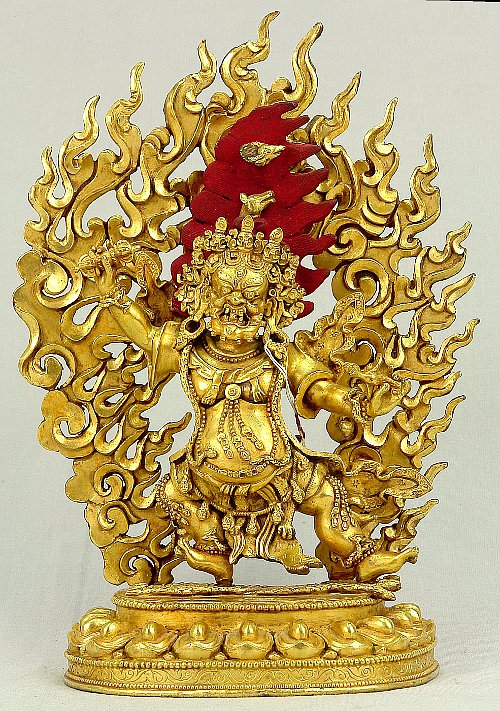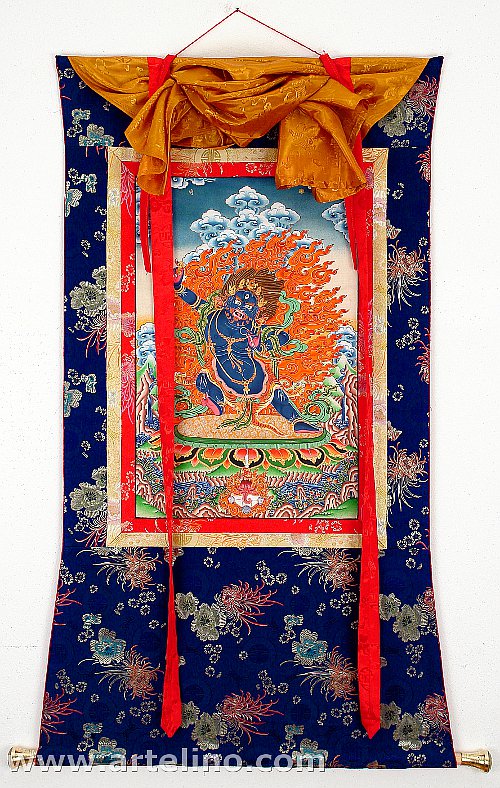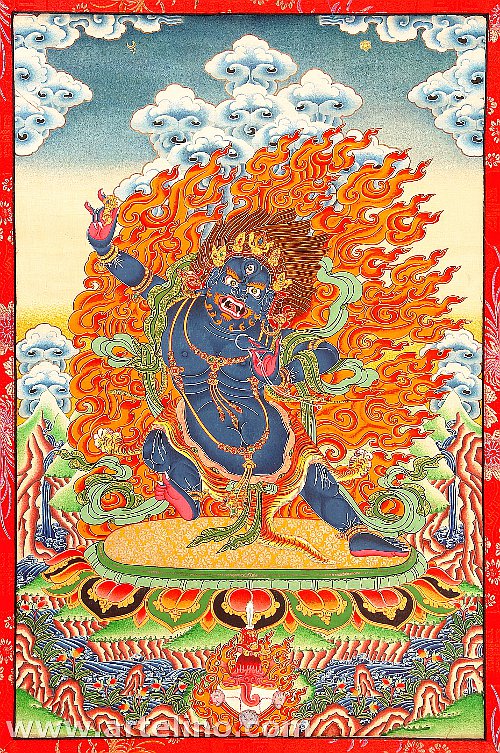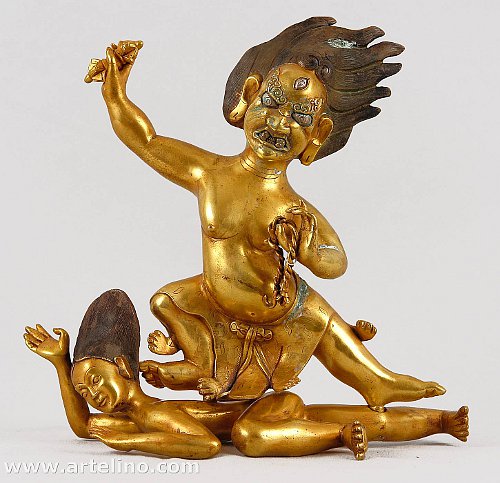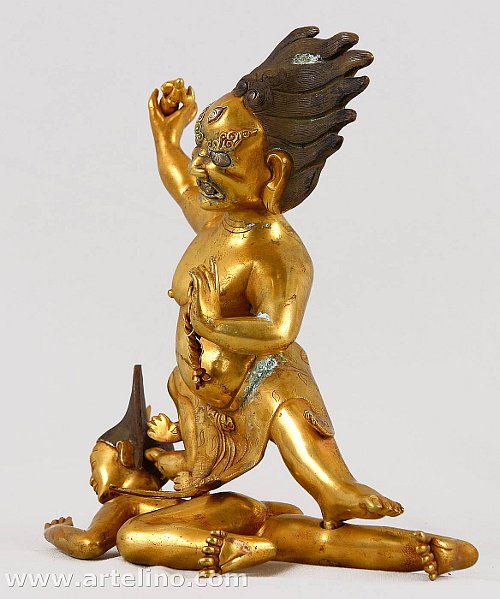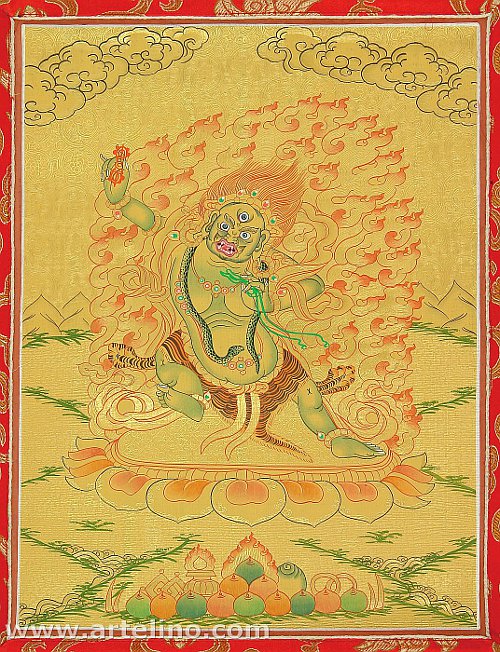| < Prev | Next > |
|---|
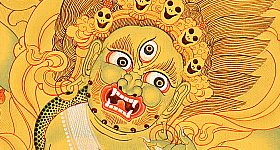 Vajrapani is one of the Bodhisattvas. Overall an interesting guy with a cute story. And overall easy to remember for non-scholars. 'Vajra' is that thunderbolt thing and 'pani' means 'in his hands'. Thus, Vajrapani - thunderbolt in hand. His Tibetan name is Chana Dorje.
Vajrapani is one of the Bodhisattvas. Overall an interesting guy with a cute story. And overall easy to remember for non-scholars. 'Vajra' is that thunderbolt thing and 'pani' means 'in his hands'. Thus, Vajrapani - thunderbolt in hand. His Tibetan name is Chana Dorje.
Vajrapani - a Wrathful Deity
Vajrapani is one of these wrathful deities. These evil looking demons are presumably older than the teachings of the historical Buddha that started about 2,500 years ago in India. When Buddhism finally moved to northern countries like Tibet and Nepal and prevailed over the old shamanistic Bön religion, all these terrifying demons were domesticated by declaring them protectors of Buddhism. Thus the transformation to Buddhism was made easier for the common people. They could basically hang on to their old gods.
Vajrapani is also one of the Bodhisattvas, fine and altruistic Buddhist's little helpers who resist to go to Nirvana as long as there are still sentient beings in this world who have not yet reached this state.
Mr. Thunderbolt in Hand
Vajrapani is always shown with a thunderbolt ('vajra') in his hand. Sometimes he holds the 'vajra' against his chest. His color is blue. To make him look really 'pleasant' he wears a tiger skin around his waist and a living snake around his neck. Vajrapani stands for power and energy. Oh yes, he does look like that.
Vajrapani - the Rain God
Vajrapani is also said to be good in controlling the rain. When there is not enough or too much rain, Tibetan and Nepalese Buddhists may pray to Vajrapani. There is a funny story how Vajrapani came into his position of rain manager.
One day the Nagas wanted to listen to the teachings of the Buddha. But their intimate and mortal enemies, the Garudas were also there, and only waiting to kill the Nagas. You must know that the Garudas are huge bird-like beings and the Nagas are half human and half snake. And the Nagas are the guardians of the water and the rain-givers.
To enable the Nagas to listen to Buddhas teachings without fear of being killed, this awesome looking Vajrapani was charged as the Nagas bodyguard. And that's how Vajrapani's association with the rain began.
PS: I forgot to mention that Vajrapani is sometimes depicted on Tibetan thangkas or as Nepal statues in Garuda form, because he took that shape to deceive these odd birds when he had to protect the Nagas.
Dieter Wanczura, August 2010.




